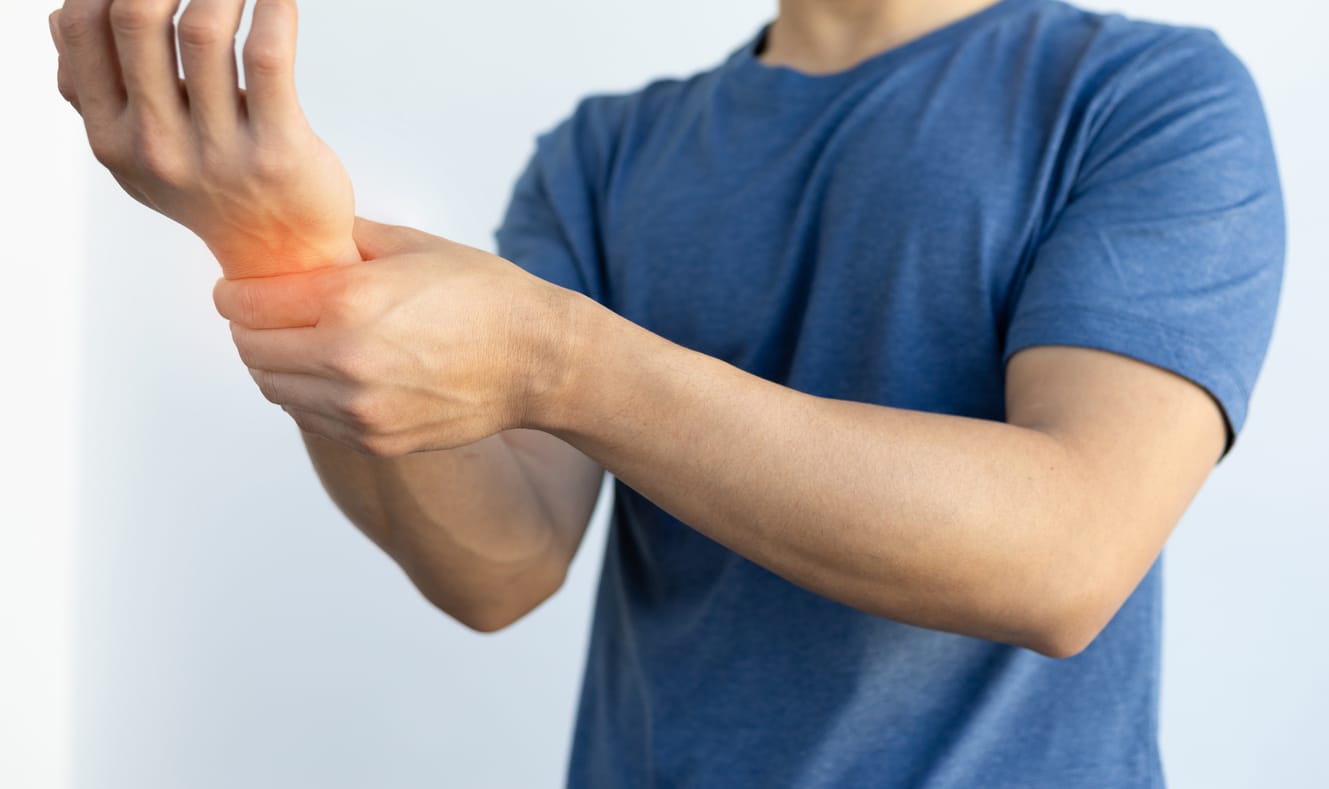Written By: Dr. Evan Steinke, B.Sc., DC
Carpal tunnel syndrome (CTS) is a well-known condition that can cause wrist and hand pain. It is notorious for causing pain and/or numbness along with the hand among office workers, gardeners, and anyone performing repetitive tasks. It is caused by the squeezing of the median nerve as it passes through a narrow tunnel at the wrist. However, despite how prevalent CTS is it is not the only location the median nerve can become compressed.
Pronator Teres Syndrome (PTS) is a lesser-known form of median nerve compression and may mimic, and even be misdiagnosed, as CTS. The condition is named after the muscle that causes it, the pronator teres. This is a relatively small forearm muscle located at the inner elbow and is responsible for turning our forearm palm side up (known as pronation). What makes this muscle interesting is that in most people there are two heads to the muscle and the median nerve passes directly between the two. As a result, muscle tension or injury can lead to compression of the median nerve. Compression at the elbow will result in downstream effects such as pain, pins and needles sensation, numbness or muscle weakness in the hand, again mimicking the effects of CTS. Interestingly, around 1 in 7 people are missing the second head of the pronator teres muscle which is thought to reduce the risk of developing this condition.
Patients suffering from PTS may have increased forearm irritation when activating the pronator muscle and may also experience upper forearm pain. However, differentiating the conditions can be nuanced so checking with your doctor and having a detailed physical exam can help differentiate the two. While a physical exam is often sufficient in severe cases your doctor may recommend that additional nerve tests be ordered.
Management of PTS often includes the following:
Muscle release techniques: These techniques aim to help ease pain and release muscle tension to free up the median nerve.
Exercises and Stretches: A variety of programs can be performed at home that aim to improve flexibility and decrease muscle tension.
Activity Modification: Depending on your occupation and home needs your doctor may modify your daily routines and activities to reduce the use and stress on the pronator teres muscle.
Rest: Inflammation and swelling around an injured muscle can add pressure to the nerve. Allowing the muscle to rest and the body to clear the inflammation will aid in recovery.
Ice/heat: In cases of trauma or acute injury, the use of ice and/or heat can help reduce pain and bring blood to the area.
Ultimately both CTS and PTS are caused by the compression of the median nerve just at different locations. A thorough examination is vital in differentiating the two conditions and for appropriate treatment to be applied.
If you are experiencing any of the above symptoms be sure to book in at Active Sports Therapy, for a personal assessment and treatment plan. Dr. Evan Steinke, BSc. DC works at AST Westman



